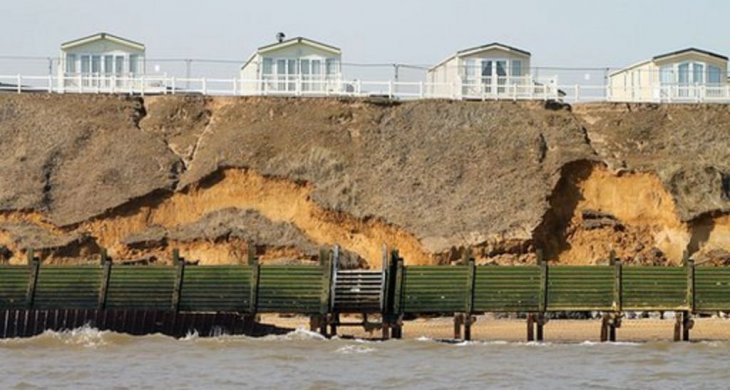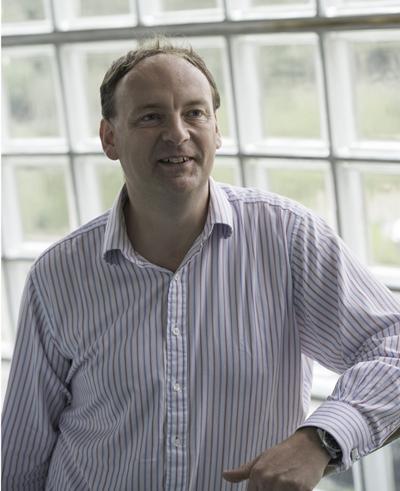The role of Biological-Physical Interactions in Managing Coastal Dynamics


Primary Investigator – Prof Martin Solan, University of Southampton
Co-Investigators: Maria Diakoumi, Vanessa Marr University of Brighton, Grainne El Mountassir University of Strathclyde, Hachem Kassem University of Southampton
Project overview
Strategic guidance for coastal management is provided through Shoreline Management Plans, which provide a high-level assessment of the risks associated with coastal erosion and flooding over the short, medium and long term (100 years), with the aim of informing policies for each section of coastline to reduce risks to people and the built and natural environment. Historically, ‘Hold the Line’ and ‘Advance the Line’ approaches to reducing coastal erosion and flood risks have been favoured in high-risk areas. These approaches involve ‘hard’ engineering interventions including construction of fixed defences, such as dikes, sea walls and embankments or beach nourishment, but require on-going expensive maintenance, can cause adverse ecological effects and hinder the recreational use of the coast. Alternative approaches include ‘Managed Realignment’ or ‘No Active Intervention’. Climate change and accelerating rates of sea level rise are expected to escalate trends in coastal flooding and erosion and an uplift in the severity and frequency of storm surges. Consequently, it is now recognised that in a changing climate hard protection of communities and infrastructure will no longer be technically, economically, environmentally or socially feasible in many UK coastal locations (EA, 2020; Committee on Climate Change, 2018). Recently, nature-based solutions have gained increasing attention as an alternative means for providing long-lasting, resilient and sustainable transformation of coastal areas: offering solutions to flooding and coastal risks, creating and restoring habitat and enhancing biodiversity (EA, 2020; EPSRC, 2022). As well as offering multiple beneficial functions natural systems can be self-sustaining and can dynamically adapt to environmental changes. Yet the implementation of nature-based solutions must be underpinned by robust scientific evidence relevant to key coastal habitats and socio-economic contexts. However, the complexity of sediment dynamic processes – including coupled physical biological processes – on and within the seabed, and at the water-land interface, are not well understood. Indeed, most studies evaluating the coastal consequences of climate change have tended to compartmentalize and consider, independently, physical or biological system responses. Coupled biological-physical dynamics that have the potential to better represent system responses to environmental forcing, whilst also addressing aspects of biodiversity, carbon and greenhouse gas regulation, and multiple other benefits for health, the economy, society and the environment, have received little attention. In the limited number of studies where the role of biology on sediment erosion behaviour has been investigated, observations have been constrained to individual species of bacteria, fungi, plant or invertebrates (Chen et al., 2017; Viggianni et al., 2013; Ganthy et al., 2014; Salifu, 2019) . If we are to predict sediment erosion in natural contexts and design effective nature based interventions, what is needed is fundamental understanding of how interactions between multiple species, within and between multitrophic levels (bacteria, fungi, plants, invertebrates), influence sediment entrainment and transport processes.
Our overarching aim is to explore coupled bio-physical processes relevant for potential nature-based interventions in coastal sediment systems that face direct and indirect coastal erosion, under a changing environment (e.g. enhanced mixing and storminess). In this project, we will generate novel scientific evidence that unambiguously will: (i) identify causal relationships that establish the role of physical, biological and coupled biological-physical dynamics in determining multiple system responses; and (ii) explore the importance of spatial order and configuration of biological-physical interventions in order to maximise positive system responses and recovery from coastal forcing. We will (iii) leverage the impact of our research using Public Policy@Southampton (PPS) to co-develop a bi-directional Engagement Strategy with our partners (Natural England and Norfolk District Council.
The team
Southampton (UoSo): The School of Ocean and Earth Sciences & National Oceanography Centre Southampton (NOCS) is the largest single grouping of marine and Earth scientists in the UK. In REF2021, SOES was ranked in the top 5 earth and environmental science schools nationally and 98% of research was world-leading or internationally excellent. Solan (Prof. in Marine Ecology) is lead PI. He led NERC Shelf Seas Biogeochemistry (SSB), co-led the NERC Coastal Biodiversity and Arctic Benthos research programmes, and manages the Biodiversity Ecosystem Futures Facility and Benthic Ecoacoustics laboratory which focus on the ecosystem consequences of anthropogenic disturbance, environmental forcing and changing biodiversity. Kassem (Lecturer in Ocean Engineering) explores drivers, impacts and nature-based adaptations to coastal change, with expertise in field and experimental investigations of flow-seabed-structure-ecosystem interactions. He leads several industry and government agency funded projects on coastal processes and sediment dynamics, including an ERC on benthic roughness of vegetated ecosystems. He manages the Coastal Processes labs at SOES. Public Policy Southampton (PPS) bring academic policy engagement expertise, increasing the policy impact of research and the delivery of policy-focused outputs. Dbouk (no cost, via PPS) expertise is in designing/delivering policy engagement strategies.
Strathclyde (UoSt): The Centre for Ground Engineering and Energy Geosciences (GEEG) is a highly-innovative cross-disciplinary research group, that bridges the gaps between geotechnical engineering, geomicrobiology, geochemistry, geology and geophysics, with specific interests in (1) ground improvement/barrier technologies, (2) low carbon earth infrastructure and (3) energy geosciences. Staff in GEEG currently lead >£9M of UKRI/EPSRC funded projects. El Mountassir (Reader in Geotechnical Engineering) is a current UKRI Future Leaders Fellow. Her research interests are in the application of microbial processes within geotechnical engineering. She is PI of Soil-mycelia systems for slope stabilisation (UKRI £1.3M, MR/V025376/1) and has led Fungal Hyphal Networks for Ground Improvement (EPSRC, £99k, EP/N035526/1) and Grouting of well leakage and migration pathways: biogrouting and colloidal silica (Oil & Gas Tech. Centre, £235k).
Brighton (UoB): The Sustainability and Resilience Engineering (SuRE) Research Group at University of Brighton investigates the response of materials, soils, structures and engineered systems to forces imposed by their interaction with naturally occurring processes. SuRE is part of the Advanced Engineering Centre (AEC) based in a recently built £14M state-of-the-art facility. Diakoumi is a Principal Lecturer in Geotechnical Engineering. Her research interests lie in the areas of soil-structure interaction, physical modelling, design and maintenance of geotechnical infrastructure. She is currently leading a UKRI funded Innovate UK project on Innovations in Cone Penetration Testing in partnership with ConeTec and Lankelma (£334k) and has also worked in previous research projects funded by Santander Alliance Universities (PI), the European Union (FP7 Co-I, Interreg Co-I), and the Royal Academy of Engineering (Co-I). Marr (Principal Lecturer in Visual Communication) is a Leader for Design for Digital Media, a member of the Centre for Arts & Wellbeing and the Creative Research Methods Group and a fellow of the Royal Society of Arts (RSA). Her research involves projects that entice and engage communities in social change initiatives using creative research methodologies underpinned by theories of autoethnography. Marr also brings 10+ years of industry experience managing and delivering creative projects for environmental not-for-profit and charitable organisations as co-owner of a successful design agency.
Relevant recent publications:
Solan et al. (2020) Benthic-based contributions to climate change mitigation and adaptation. Phil. Trans. R. Soc. B 375: 20190107; Touza Montero et al., incl. Solan. (2021) Coping and adaptation in response to environmental and climatic stressors in Caribbean coastal communities. Environ. Management 68, 505–521; Ogbuagu et al. incl. Kassem (2022). Role of saltmarsh systems in estuarine trapping of microplastics. Sci. Rep. 12:15546; Kassem et al, (2021) Hydrodynamic controls on the particle size of resuspended sediment from sandy and muddy substrates in British Columbia, Canada, J. Coast Res., 37(4), 691–707; Salifu et al. incl. El Mountassir (2022) Hydraulic behaviour of fungal treated sand. Geomech. Energy Environ. 30: 100258; Salifu & El Mountassir (2021) Fungal-induced water repellency in sands. Géotechnique 71: 608-615; El Mountassir et al. (2018) Applications of microbial processes in geotechnical engineering. Adv. Applied Microbiol. 104: 39-91; Stone & Diakoumi (2021). Performance of a self-installing monopiled gravity base structure under lateral loading. Int. J. Phys. Model. Geotech. 21: 268-274; Diakoumi et al. (2020) Effect of fiber reinforcement on the bearing capacity of a surface strip foundation. Proc. 4th Eur. Conf. Phys. Mode. Geotech. Lulea, Sweden p. 227-232.